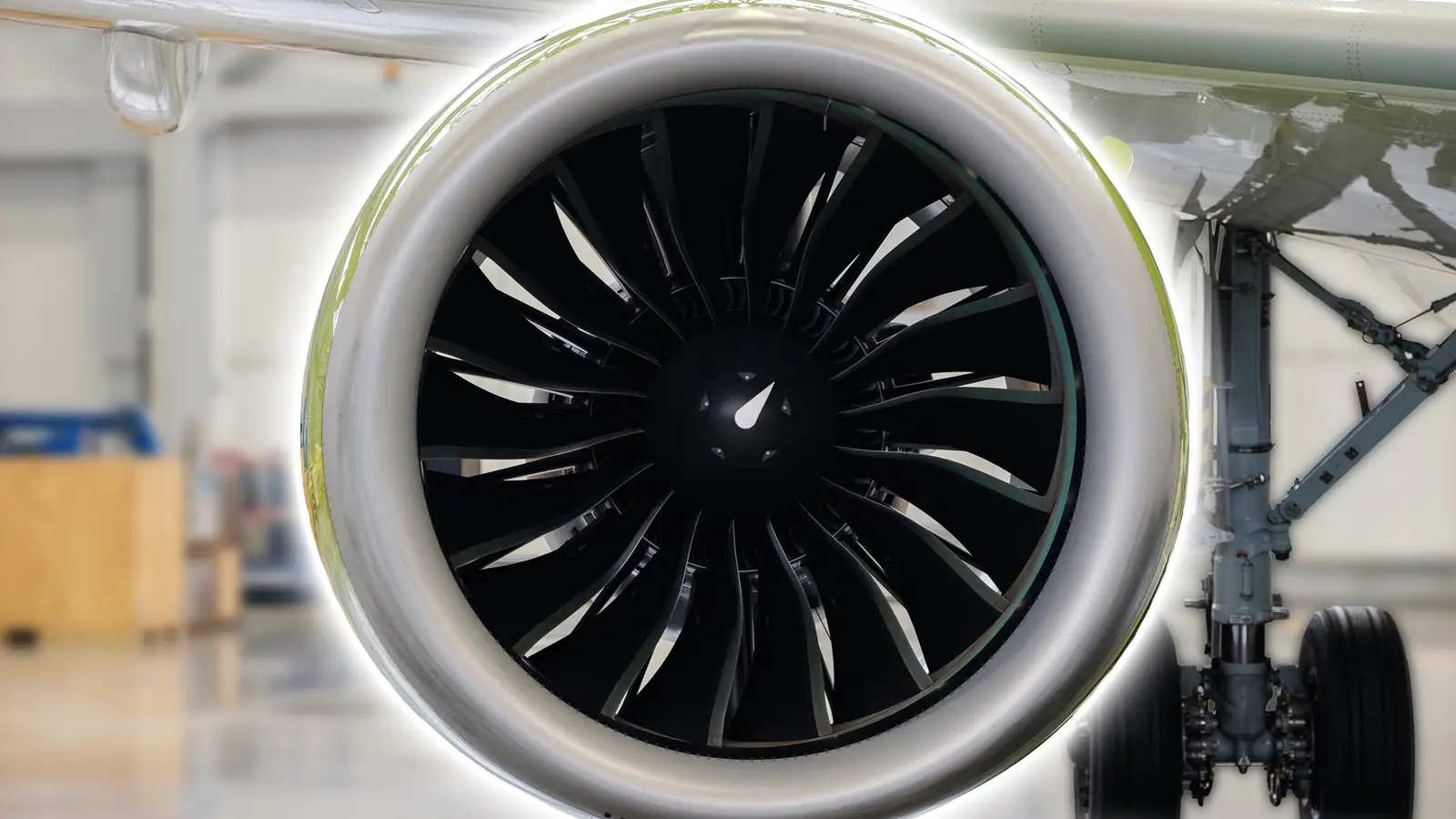Copyright Simple Flying

Enginemakers form a critical part of the aviation ecosystem, providing the engines that power commercial aircraft. Engines are the single most valuable component on an aircraft, and their efficiency can make or break an aircraft's profitability. As it stands, the global aircraft engine market is dominated by four companies, namely CFM International, General Electric, Pratt & Whitney and Rolls-Royce. While there is no single manufacturer that can claim to dominate the engine market, different companies can lay claim to being the leader in their segment. For example, CFM International (which is a joint venture between General Electric and Safran) and Pratt & Whitney can stake their claims as the dominant single-aisle jet engine manufacturer, while Rolls-Royce has a strong footing in the widebody market. But which, if any, of these enginemakers can be said to dominate the market? Multi-Billion Dollar Industry It has been a long-held rule of thumb that when a new aircraft is delivered, around 20% of its value is made up of its engines. While this was roughly true in previous decades, engine value has gone up even more on modern aircraft, so this figure can rise to almost half an aircraft's value in the present day. While the overall airframe of an aircraft depreciates considerably in value each year, engines lose their value more slowly and can still be worth a lot even when the aircraft itself is ready to retire. According to Global Market Insights, the global aircraft engine market had an estimated worth of over $81 billion in 2024. The North American market made up over a third of that valuation, with turbofan engines comprising over 70% of sales. Not only this, but it is growing with a Compound Annual Growth Rate (CAGR) of almost 9%, which would push its valuation to over $184 billion by 2034. To put this growth into perspective, the size of the North American market in 2034 is projected to eclipse the value of the entire global industry in 2024. Conventional engines make up the bulk of new engine orders today, but this stands to change within the next decade or two with the rise of hybrid engines. Although hybrid engines are a relatively new technology, their development and usage are growing, particularly among regional aircraft. GE Aerospace General Electric, operating under the name GE Aerospace, provides engines for a mix of widebody platforms made by Boeing. In fact, GE engines power half the global widebody fleet, including the Boeing 747, 777 and 787 Dreamliner. The company is the sole engine option for the Boeing 777 and 747-8, and also offers one of the two engines for the 787 Dreamliner, alongside Rolls-Royce's Trent 1000. GE is the manufacturer of the world's largest turbofan engine, the GE90-115B, which is equipped to the 777-200LR and 777-300ER. This mammoth engine is capable of reaching over 115,000 lbf of thrust, but it will be superseded by the GE9X in size and capability. The GE9X is the sole engine choice for the upcoming Boeing 777X — which includes the 777-8 and 777-9 — and has broken records during ground testing for its immense power. The enginemaker also currently produces the GEnx engine, which powers both the 787 Dreamliner and 747-8. Since its introduction in 2011, the GEnx has logged over 62 million flight hours, with GE securing over 3,600 sales. According to GE Aerospace's latest annual report from 2024, the company has approximately 45,000 in its installed base, although this also includes figures from its joint venture, CFM International. Pratt & Whitney Now over a century old, Pratt & Whitney brought in revenues of over $28 billion in 2024 and has grown to boast a workforce of around 43,000 employees. In terms of pure volume of engines sold, Pratt & Whitney is second in the market (behind CFM International) with a share of around 35%. This is because the bulk of its sales are for engines powering narrowbody aircraft, like the Airbus A320 and A220. While the PW4000 engine proved a hit in its day, it was superseded by newer models for the A330neo and 747-8. Nowadays, Pratt & Whitney is best known for its geared turbofan (GTF) PW1000G engine family, which offers significant fuel burn and emissions improvements on previous-gen engines. However, the planemaker has been experiencing major production challenges with its GTF engines, with hundreds of engines recalled for inspections and repairs in the last few years. Nonetheless, Pratt & Whitney remains a huge force in the narrowbody commercial engine market and continues to secure hundreds of new orders each year. After it recorded a full-year loss in 2023, Pratt & Whitney returned to profitability in 2024, having implemented a roadmap to improve its manufacturing processes, particularly in light of the GTF failures. This has helped the company maintain interest from customers, and 2025 has overall been a good year for the enginemaker. As it stands, there are over 12,000 orders for its GTF engine placed by over 90 operators worldwide. Rolls-Royce Rolls-Royce may have a smaller market share of around 12% in terms of units sold, but its widebody focus means these engines are more expensive than narrowbody powerplants. The company's Trent family of engines power both Airbus and Boeing widebody models, including as the sole choice on the popular A350 and as an option on the 787 Dreamliner. They also power the out-of-production Airbus A380 and A340 quadjets with the Trent 900 and Trent 500, respectively. According to the enginemaker, there are now around 6,000 Trent engines in service worldwide, with the Trent program celebrating its 30th anniversary this year. The engine has now accumulated over 200 million flight hours and has flown around 3.5 billion passengers. The company's newest engine development program is the UltraFan, which could become the world's largest engine if it ever enters service. While targeting widebody aircraft, Rolls-Royce claims the technology is scalable and could be used for narrowbody jets too. The Other Major Player The enginemaker with the largest market share is not one of the above three companies, although one of them — General Electric — does have a major stake in it. Holding almost 40% of the market is CFM International, a joint venture between General Electric and French firm Safran. CFM currently produces the LEAP (Leading Edge Aviation Propulsion) engine for the Airbus A320neo and Boeing 737 MAX, and is actively working on its RISE program to develop the next generation of engines. CFM was founded over half a century ago and remains best known for its CFM56 engine family. Although this engine eventually became the best-selling commercial jet engine of all time, it was not all plain sailing for CFM during its early years, when it failed to attract a single order for the CFM56 for nearly half a decade. But with over 33,000 units sold and more than one billion flight hours logged, the CFM56 has secured its position in the annals of aviation history. The company moved on from the CFM56 with its LEAP family of engines, which made its debut on the A320neo in 2016. It is also the exclusive engine choice on the Boeing 737 MAX and has since logged over 80 million flight hours with almost 150 airlines across the globe. Is There A Clear Winner? Together with CFM International, GE Aerospace claims to power three out of every four commercial flights, so if we can crown a dominant force in the engine market today, it would be GE Aerospace and its partners. Also key with GE and CFM is that they support both narrowbody and widebody programs, with CFM continuing to power the A320neo and 737 MAX, while GE has the 787 Dreamliner and 777X. Pratt & Whitney may have carved out a strong niche with its GTF engine family, but its reputation has been hit by ongoing problems with its engines. Despite this, airlines are still choosing their engines, with Pratt & Whitney securing over 1,100 engine orders in the first half of 2025 alone. But with a smaller market share than CFM and GE and its absence from the widebody market, Pratt & Whitney still has a lot of catch-up to play. Rolls-Royce currently powers around one-third of the global widebody fleet but has had a tough time since the pandemic. However, the company has seen a surge in demand this year, overseeing a 17% year-on-year rise in commercial sales. With RR considering a return to the narrowbody market with its UltraFan technology, it could see considerable growth within the next couple of decades.



